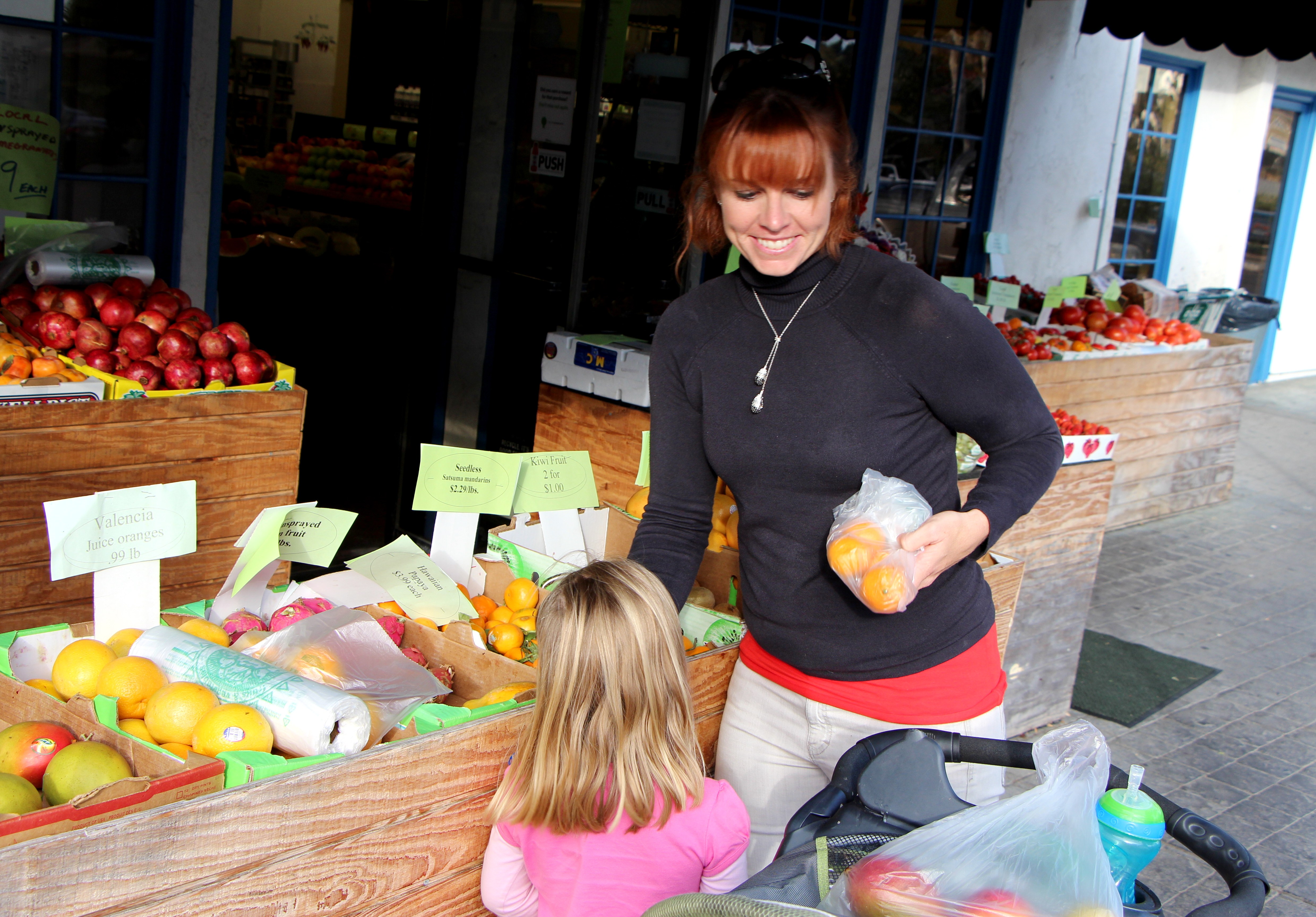This article was contributed by Debbie M., MS, RD –
- Plan Your Menu Ahead
Before you make that shopping list, figure out your meals for the week so you know what you will need to make well-balanced dishes. Planning ahead ensures that you have a diet full of great tasting, satisfying and nutritious meals. If you don’t have time to cook, try pairing a healthy packaged entrée with ready-to-eat produce, complemented by a glass of milk. But try not to eat more than two frozen entrées during the week because they’re often low in nutrients.
- Make a Grocery List Before You Shop
Creating a list helps you to buy what you need and limit purchases of what you don’t need—like those tempting chips and cookies nicely displayed on end-caps of the grocery aisle. If you’re not a list-maker; let technology help, and consider a smartphone app like Out Of Milk. Categorize the items on your list by food group or by fresh, frozen/refrigerated, boxed/canned as a guide to map-out your trip and save time.
- Explore the Store and Set a Route
Get to know the layout of the supermarket. This will help you find what you need quickly and avoid impulse purchases. It can be hard to keep on-track selecting only wholesome items. Start with the produce section and work your way around the perimeter to ensure a shopping cart full of nutritious foods. Next, weave up-and-down the aisles for convenience items that make your meal preparation easier. Finally, hit the freezer section last to keep products cold on your way home.
- TOP TIPS for Your Grocery Basket
Staples – These are your items that are handy for the majority of recipes: pastas, rice, beans, flour, oil (olive or canola oil is recommended), vinegar, herbs, spices, butter, broth, and tomato-based pasta sauce.
Fruits and vegetables: MORE MATTERS so don’t hold back here! The goal is 5-9 servings per day. Pick various levels of ripeness so you’ll have some prime poducre at the end of the week.
Dairy case: Choose low-fat or non-fat milk, yogurt, and cheeses. If you eat whole eggs, one dozen per 1-2 people will do each month.
Meat, fish and poultry: Opt for lean cuts of beef and pork that indicate “round” or “loin” in the name, and choose lower fat versions of ground meats. Select a variety of fish or seafood that isn’t smoked, and skinless breasts are best when it comes to chicken, turkey and poultry.
Bakery: Select whole-grain products when available. Besides wheat, try other grains like rye and oat. High-fiber selections are also good to choose.
- Stay Focused, Avoid Distractions
Don’t shop hungry — Did you know more impulse purchases of savory snack items are made when your stomach is empty? Eat something before you go so your mouth and stomach are not making the decisions.
Set a pattern — Establish a routine day and time that makes it easy for you to get to the store and spend time shopping so you aren’t rushed. Try going during the store’s off-hours to avoid crowds. Having a peaceful mind, means making better choices.
Handling Junior shoppers — An enjoyable grocery shopping experience with kids means getting them involved; teach young children about color, smell and names of new foods. Allow older kids to make choices between two or three options to foster independence.
Use your list — You created it, so have your list it ready to use in your wallet, purse, or on your smartphone. Following your list will limit unnecessary buying. Just take it with you and stick to it!
Read labels – The Nutrition Facts panel can be a consumer’s best shopping tool. Compare products’ caloric content and nutrition value for a couple of items each trip.
Did you like this TOP TIP? Check out the newest addition to LIVING HEALTHY…Ask Our Dietition CLICK HERE!
For more great TOP TIPS be sure to come back every week and follow LIVING HEALTHY. To learn how, CLICK HERE.


Tip #2 – Make a Grocery List Before You Shop – that’s a must!
Thanks for the post and ideas. I found something that helps me be really efficient and that is a printable grocery list maker. I can be really busy but remember something i need to pick up and just push a button and record it and they when i am ready to shop i print off my list and go. This has made shopping really easy for my busy life.